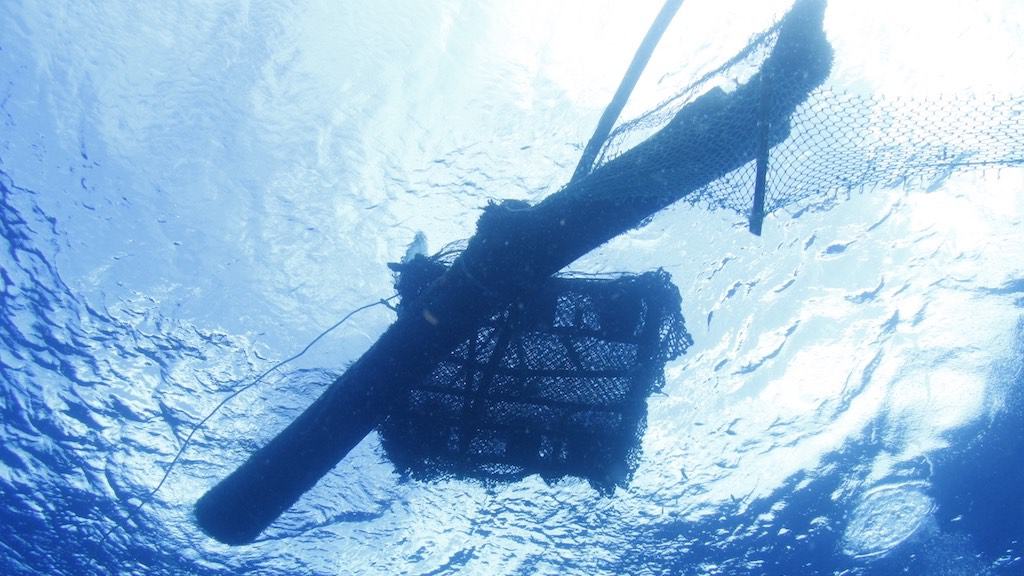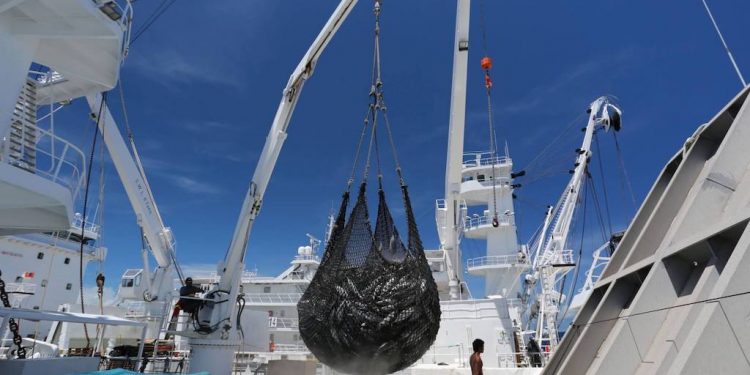There are some uneven outcomes from the Western and Central Pacific Ocean Tuna Fisheries management meeting, according to ISSF representatives – welcoming progress on tuna conservation measures and observer coverage, but disappointed at the lack of movement on FAD management and compliance process transparency.
The Western and Central Pacific is the source of the majority of the world’s catches of tuna, and this year’s meeting resulted in positive outcomes for Pacific tuna fisheries, including a harvest control rule for North Pacific albacore, the adoption of an updated tropical tuna conservation measure, and moderate progress on electronic monitoring and observer coverage.
‘But the Commission’s work fell far short in other areas, especially regarding increasing transparency in WCPFC compliance assessment processes and improving fish aggregating device (FAD) management,’ an ISSF representative commented.

While no WCPO tuna stocks are overfished or experiencing overfishing, using precautionary and scientifically rigorous management measures to keep these stocks at healthy levels, WCPFC needed to respond to the outcomes of its management procedures (harvest strategies) for skipjack tuna and North Pacific albacore.
‘Specifically, WCPFC needed to translate the outputs of the skipjack management procedure into fishing catch-and-effort controls contained in the tropical tuna measure, and adopt a harvest control rule for North Pacific albacore tuna. We are pleased that the Commission made progress on both fronts. But we are hesitant to label the updated tropical tuna measure a “win” because its full impact on tuna stocks and WCPO ecosystems in general is difficult to predict, especially considering certain existing WCPFC management gaps,’ ISSF’s representative commented.
ISSF has been calling for accelerated progress on developing electronic monitoring (EM) standards for WCPO tuna fisheries, as well as a timeline to substantially increase independent monitoring in longline fisheries – and is satisfied that the Commission responded by tasking its EM Working Group with the development of interim technical standards for adoption next year.
‘We are also pleased to see the Commission increase observer coverage to 10% for the longline fleet in its updated tropical tuna measure, as well as make such increases a prerequisite to raising bigeye catch limits,’ ISSF stated.
‘However, our strong preference is for observer coverage to increase across the longline fleet generally, and not necessarily be linked to fishing possibilities. The decision in the tropical tuna measure is a step in the right direction — but it makes advancing the interim EM Standards though the EM Working Group next year that much more critical. EM will be an essential component of remedying the longstanding subpar observer coverage on longline vessels.’
The disappointments from this year’s meeting are the Commission’s failure to act on the request to develop guidelines for observer participation in compliance assessment processes – and the missed opportunity to improve at-sea transshipment regulations.
‘If not well-managed, at-sea transshipment can be a conduit for IUU fish to enter the supply chain. We sought strengthened transshipment in line with best practice standards, including elements like the use of automatic identification systems (AIS) and near-real-time electronic reporting for all transshipment activity. It is disappointing that the Commission failed to act,’ ISSF’s representative said, commenting that the failure to strengthen FAD management is a further disappointment.
‘The Commission not only made decisions that weaken the existing management of FADs but also failed to take any additional needed FAD management measures. Inconsistent with the precautionary approach, WCPFC deferred its consideration of the transition to biodegradable FADs to 2026. Managers also failed to agree on proposals to require the provision of near-real-time FAD position and acoustic biomass data for scientific use,’ ISSF stated.
‘The Commission also reduced the length of the existing FAD closures – effectively diminishing the suite of FAD management measures that had been in place and were making solid contributions towards the sustainable utilisation of tuna resources. Overall, many difficult issues were pushed to discussions in future years, perpetuating complex challenges that critically require action.’









